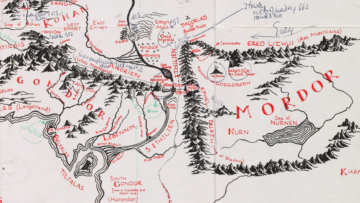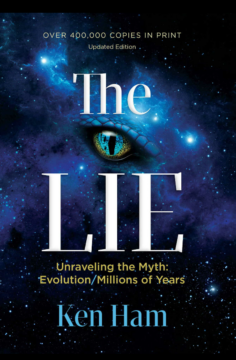by Mike Bendzela

The words are fine, and some of the concepts they represent rather appealing, actually. It’s the usages to which they are put that bug me, usages that are by turns deceiving, dishonest, obfuscating, bogus, hokey, and euphemistic. There is a theme binding them all together, one concerning us humans’ exploitation of the wild world. The words pertain to how we use “resources,” which I define as the materials that make up the planet and its life as viewed through a bottomless stomach. These terms are unthinkable without our having domesticated ourselves and our surroundings: I cannot imagine our foraging ancestors in the Pleistocene having need of such words. Only a creature in a broken relationship with its planet needs a special terminology to salve its wound. Such words allow us to entertain feelings of wholesomeness while engaged in plunder.
1. Organic
Originally, pertaining to organisms. That’s the simple root. For a long time, matter associated with organisms was thought to be special because it was alive. Surely a vital force animated such material. Then a chemist name Friedrich Wöhler managed to produce urea — a component of urine — without having to pee in a bottle. He found it could be produced from ordinary, dead matter as well as through the processes of life. Thus began organic chemistry — the study of the properties of the carbon atom. At that moment, the word bifurcated, with continuing absurd consequences.
Among farmers, some pursued the synthetic way initiated by the likes of Wöhler (think Norman Borlaug and industrial agriculture), while others clung to vitalist notions, such as those promulgated by occultist Rudolph Steiner, whereby the products of living systems were privileged, “synthetics” be damned, bringing us the current linguistic mess. Organic food enthusiasts parted ways with the organic chemists around the beginning of the twentieth century, with “organic” gaining positive connotations and “chemical” negative ones.
Today the United States has the government-sanctioned term “organic” to describe a veritable Leviticus of “Allowed” and “Prohibited” substances and practices put into place to ensure that a farm is, well, organic. The term now conflicts with the scientific, chemical definition in just about every way. Read more »




 Renowned and respected for her scholarship, her history of authorship of many books on dictatorship and her political experience, is it any wonder that Anne Applebaum’s new book Autocracy, Inc. The Dictators Who Want to Run the World has been so critically received; she is an expert on her subject. This slim volume provides us with an incisive exposition and analysis of how autocrats function in the world today, securing their own personal power and wealth, and in Applebaum’s view, posing a threat to democracies.
Renowned and respected for her scholarship, her history of authorship of many books on dictatorship and her political experience, is it any wonder that Anne Applebaum’s new book Autocracy, Inc. The Dictators Who Want to Run the World has been so critically received; she is an expert on her subject. This slim volume provides us with an incisive exposition and analysis of how autocrats function in the world today, securing their own personal power and wealth, and in Applebaum’s view, posing a threat to democracies.

 Every time I read or watch anything about the election I hear some variant of the phrase “margin of error.” My mathematically attuned ears perk up, but usually it’s just a slightly pretentious way of saying the election is very close or else that it’s not very close. Schmargin of error might be a better name for metaphorical uses of the phrase.
Every time I read or watch anything about the election I hear some variant of the phrase “margin of error.” My mathematically attuned ears perk up, but usually it’s just a slightly pretentious way of saying the election is very close or else that it’s not very close. Schmargin of error might be a better name for metaphorical uses of the phrase. Philosophical reflection on artificial intelligence (AI) has been a feature of the early days of cybernetics, with Alan Turing’s famous proposals on the notion of intelligence in the 1950s rearming old philosophical debates on the man-system or man-machine and the possibly mechanistic nature of cognition. However, AI raises questions on spheres of philosophy with the contemporary advent of connectionist artificial intelligence based on deep learning through artificial neural networks and the prodigies of generative foundation models. One of the most prominent examples is the philosophy of mind, which seeks to reflect on the benefits and limits of a computational approach to mind and consciousness. Other spheres of affected philosophies are ethics, which is confronted with original questions on agency and responsibility; political philosophy, which is obliged to think afresh about augmented action and algorithmic governance; the philosophy of language; the notion of aesthetics, which has to take an interest in artistic productions emerging from the latent spaces of AIs and where its traditional categories malfunction; and metaphysics, which has to think afresh about the supposed human exception or the question of finitude.
Philosophical reflection on artificial intelligence (AI) has been a feature of the early days of cybernetics, with Alan Turing’s famous proposals on the notion of intelligence in the 1950s rearming old philosophical debates on the man-system or man-machine and the possibly mechanistic nature of cognition. However, AI raises questions on spheres of philosophy with the contemporary advent of connectionist artificial intelligence based on deep learning through artificial neural networks and the prodigies of generative foundation models. One of the most prominent examples is the philosophy of mind, which seeks to reflect on the benefits and limits of a computational approach to mind and consciousness. Other spheres of affected philosophies are ethics, which is confronted with original questions on agency and responsibility; political philosophy, which is obliged to think afresh about augmented action and algorithmic governance; the philosophy of language; the notion of aesthetics, which has to take an interest in artistic productions emerging from the latent spaces of AIs and where its traditional categories malfunction; and metaphysics, which has to think afresh about the supposed human exception or the question of finitude. The opening credits of Affliction (1997) feature small, rectangular images that fill only half the screen. You wonder if something is wrong with the aspect ratio, or if the settings have been changed on your television. A succession of images is placed before the viewer: a farmhouse in a snowy field, a trailer with a police cruiser parked in front, the main street of a small, sleepy town, the schoolhouse, the town hall. The last image is a dark, rural road, with a mountain in the distance. Finally the edges of the image expand, fill the screen, and a voice begins to narrate:
The opening credits of Affliction (1997) feature small, rectangular images that fill only half the screen. You wonder if something is wrong with the aspect ratio, or if the settings have been changed on your television. A succession of images is placed before the viewer: a farmhouse in a snowy field, a trailer with a police cruiser parked in front, the main street of a small, sleepy town, the schoolhouse, the town hall. The last image is a dark, rural road, with a mountain in the distance. Finally the edges of the image expand, fill the screen, and a voice begins to narrate:




 Egypt
Egypt Germany
Germany



